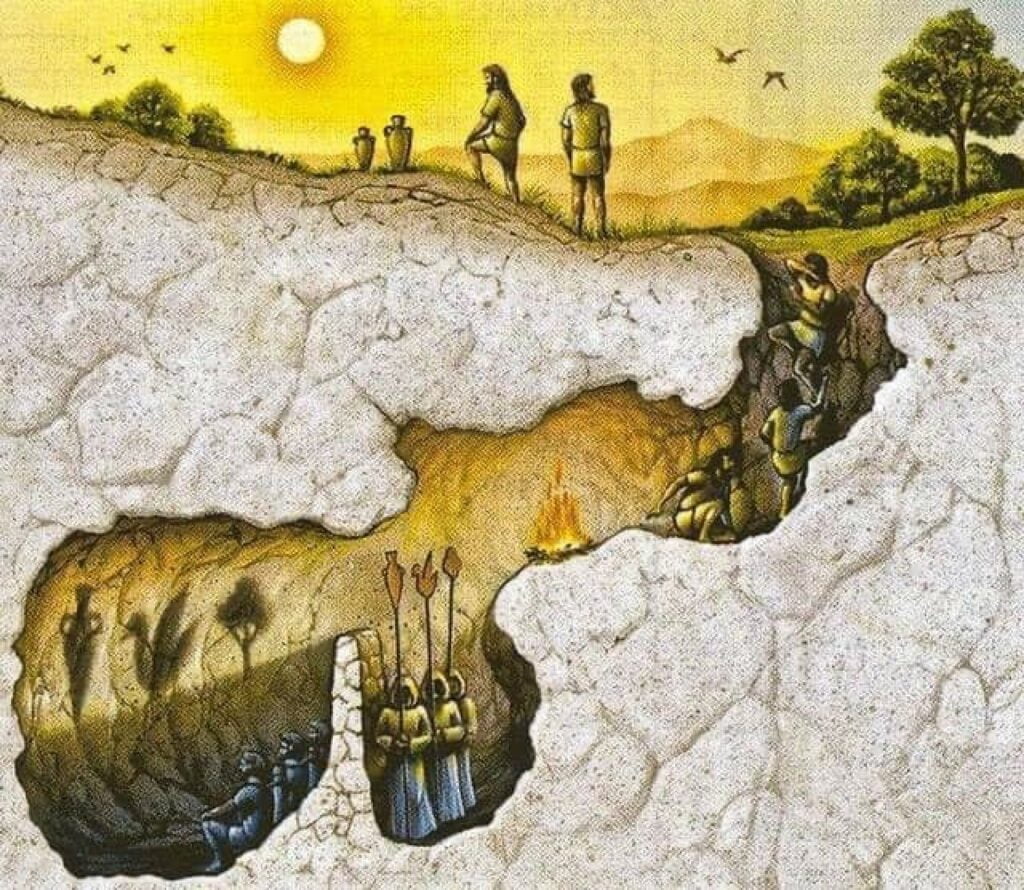
The Allegory of the Cave, or Plato’s Cave, is an allegory presented by the Greek philosopher Plato in his work Republic to compare “the effect of education and the lack of it on our nature”. It is written as a dialogue between Plato’s brother Glaucon and his mentor Socrates, narrated by the latter.
Plato uses the cave as a symbolic representation of how human beings live in the world, contrasting reality versus our interpretation of it. These two ideas reflect the two worlds in the story: the world inside the cave, and the world outside.
The shadows represent a false vision of the truth, an illusion about reality. Because the prisoners have never seen the true objects that exist in the world, the objects which are casting those shadows, they believe the shadows are all that is. Its main idea is the discussion of how humans perceive reality and if human existence has a higher truth. It explores the theme of belief versus knowledge.






Comments